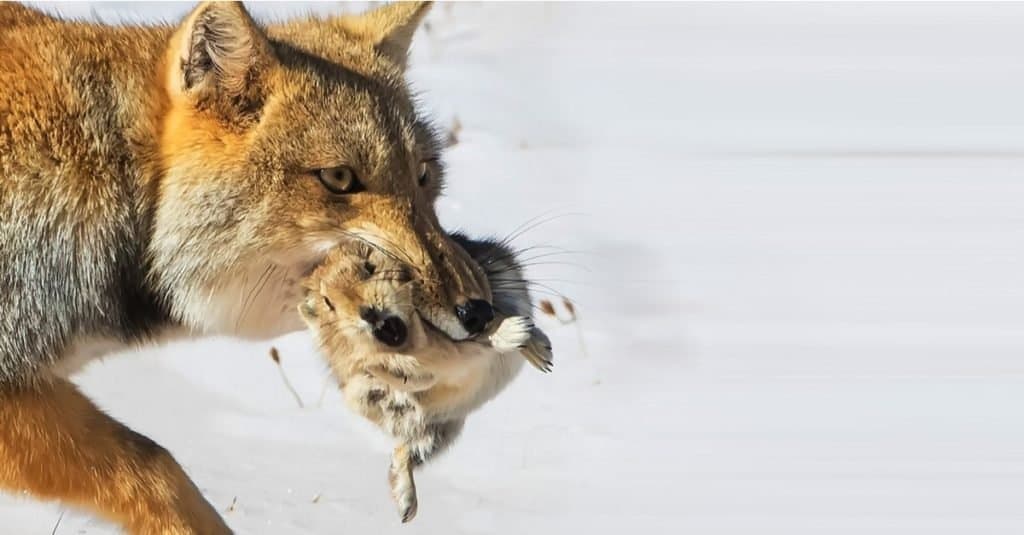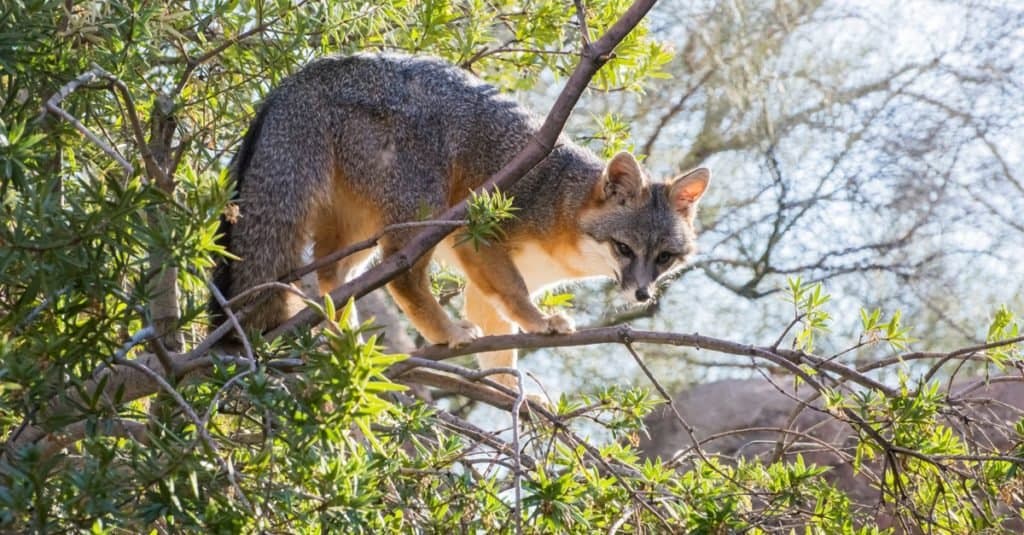Foxes are members of the Canine family and are related to carnivores like wolves, coyotes, and jackals. However, they are also related to domestic dogs and raccoons, which are omnivores. So are foxes carnivores or omnivores?
Foxes have the reputation for raiding henhouses and attacking small animals, making a real pest of themselves near human dwellings. But they have also been known to get into trash cans and eat fruit and dairy! So, are they meat lovers or do they crave a truly balanced diet?
Are Foxes Carnivores Or Omnivores?
Foxes are members of the canine family, which are characterized by their sharp and deadly teeth. In addition to grabbing and holding prey, a canine’s teeth are equipped to shred flesh and muscle and crush bones. As such, many canine species are classified as carnivores.
However, not all animals in the canid family are strictly carnivorous. Like the domestic dog and the raccoon, the fox is an omnivore. Omnivores are animals that eat both meat and plant matter.

This
Tibetan fox
is showing off his hunting prowess, but remember that foxes are omnivores!
©Wang LiQiang/Shutterstock.com
Why are Foxes Omnivores?
Foxes are hunters, and they prefer to eat meat as their primary food source. Some of the fox’s favorite foods are small mammals like rabbits and rodents, reptiles like snakes, amphibians like frogs, and birds. They will also go after larger prey like raccoons and will also eat worms and insects. Depending on the species and its environment, they will even eat crabs and mollusks!
Foxes are opportunistic eaters and known to be scavengers. They are classified as omnivores because when prey is scarce, they will not only steal eggs, but they will also eat fruits and dairy. Foxes will eat berries, vegetables, and tree nuts, as well as fungi like mushrooms. They are known pests in urban areas where they have been spotted eating out of the trash as well.
Additionally, foxes will also eat carrion, or dead animals, if they are readily available. In many cases, foxes consume insects, plants, and other food that is easy to obtain during daylight hours. At night, foxes do most of their hunting and scavenging. If they do not finish off prey in one meal, they may store it in one of the underground burrows in their territory.
How Does A Fox Hunt For Food?
Foxes are both hunters and foragers and will eat anything readily available when prey is hard to find. Foxes are nocturnal, and due to their solitary nature, they are highly efficient in any environment. It is common to see a fox active in the early morning or during the day if it suits them. Foxes are very quick and extremely clever, true to their reputation for cunning!
This species is much like a feline and prefers to sneak up on prey in an ambush rather than chase it down. However, species like the Red and Grey fox can run up to forty miles an hour to catch prey. They use their sharp canine teeth to pin prey and sever the neck or spine.
Foxes have excellent eyesight and a 260-degree field of vision, which is motion-based for hunting at night. They also have exquisite hearing and can move each ear independently to detect the smallest sounds over one hundred yards away.
Using both sight and sound, foxes can predict not only where prey is, but where it will be. They can detect prey up to three feet underground and dig quickly to where it is likely to move. Foxes are also able to find and catch insects and worms in this manner. The fox is also able to climb trees to snag birds and two species of fox are the only members of the canine family with partially retractable claws!

Yes, 2 species of foxes can climb trees! They do this with the help of partially retractable claws, and they are the only canine that can!
©Evelyn D. Harrison/Shutterstock.com
What Types Of Plants Do Foxes Eat?
Foxes enjoy fatty, protein-rich foods, but they also have a sweet tooth and like savory vegetables as well! Types of fruits and plants depend on their location and availability.
For example, the Red fox loves apples, berries, plums, and pears. Red foxes also enjoy fungi like mushrooms and nuts like acorns. In urban areas or farms, foxes will also steal both eggs and milk along with poultry. Foxes also scavenge in the trash and eat human leftovers.
Are Some Foxes More Carnivore Than Omnivore?
While all foxes are omnivores, some species rely more on meat than they do plants. This is thought to be less of a preference and more dependent on each species habitat. For example, foxes in warmer climates hunt different animals than foxes in colder climates. Each species is uniquely adapted to the environment it lives in.
Foxes in temperate climates hunt more live prey in the winter, often digging through ice and frozen ground to do so. In the summer when plants produce more fruit and seeds, they supplement their diet with plants.
Is There Anything Foxes Cannot Eat?
Foxes in the wild tend to avoid what is not good for them, but some foods are toxic or even deadly for this species. If you are apprehensive that a wild fox may consume these foods in your trash, sealing them in an airtight container at the bottom of your trash bin is a sufficient method to keep them out.
These foods include:
Chocolate
Garlic
Avocados
Fruit Pits/Seeds
Caffeine
Onions
Grains

This
Fennec Fox
is adorable and content, but remember that even an injured wild fox should not be touched! If you find an injured fox, contact the wildlife department in your area!
©Chill Chillz/Shutterstock.com
Please note that if you are caring for an injured fox, or have found abandoned fox kits, it is strongly recommended that you contact the Fish and Wildlife Department in your state. While foxes are small animals, they can cause severe injury to you and your household pets. It is never advisable or safe to attempt to keep a wild animal in your home.
In the case of fox kits, unless you are positive that the mother is dead Do not move them! Leave the area and notify the Fish and Wildlife Department. For severe cases where an adult fox is injured, you should keep your distance. Injured animals will attack, and it is best to call it in and stay away from the animal until someone arrives.
To learn more about the fox diet, check out our article What Do Foxes Eat, for more details!
The photo featured at the top of this post is © iStock.com/JMrocek
Thank you for reading! Have some feedback for us? Contact the AZ Animals editorial team.






